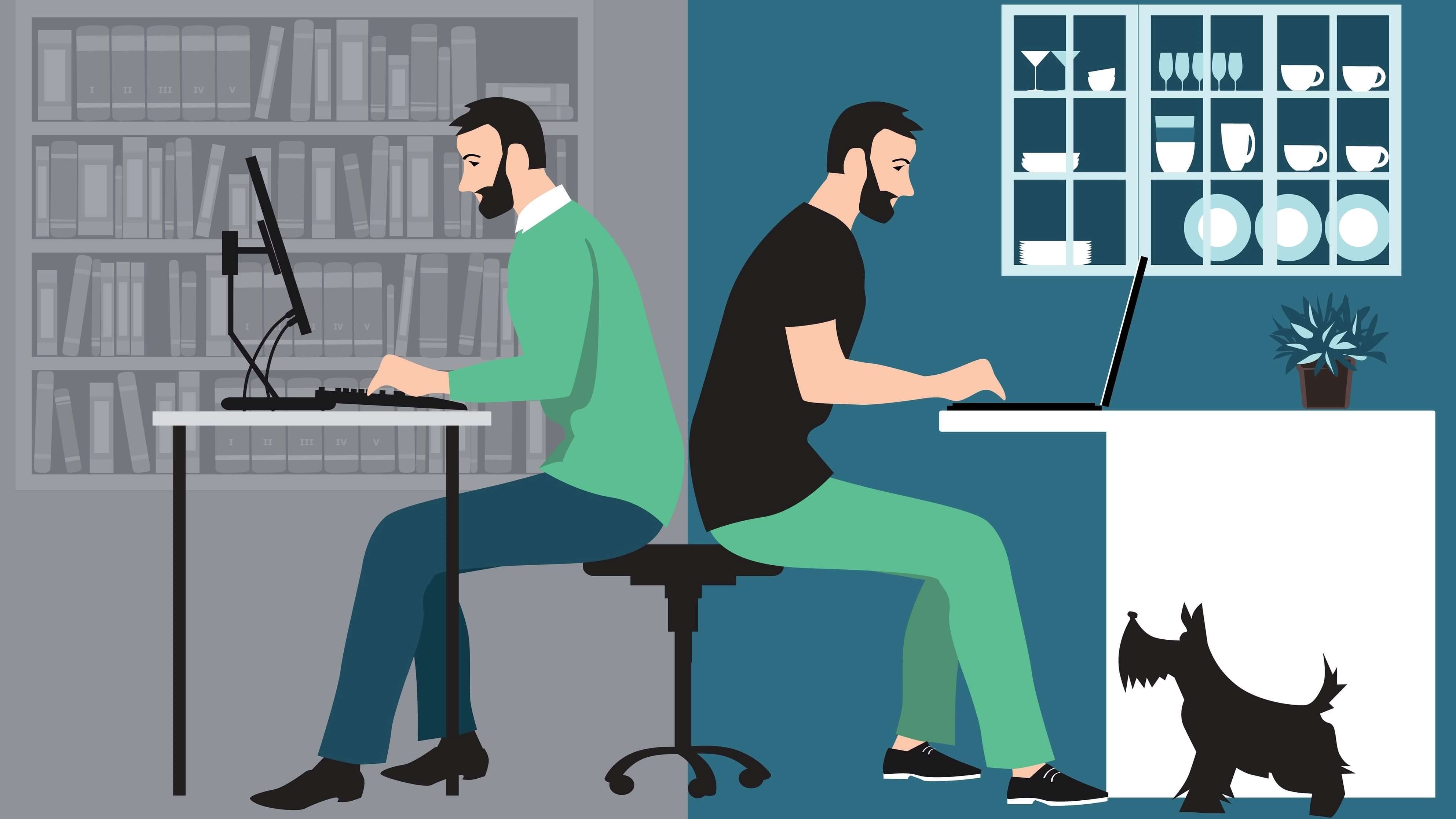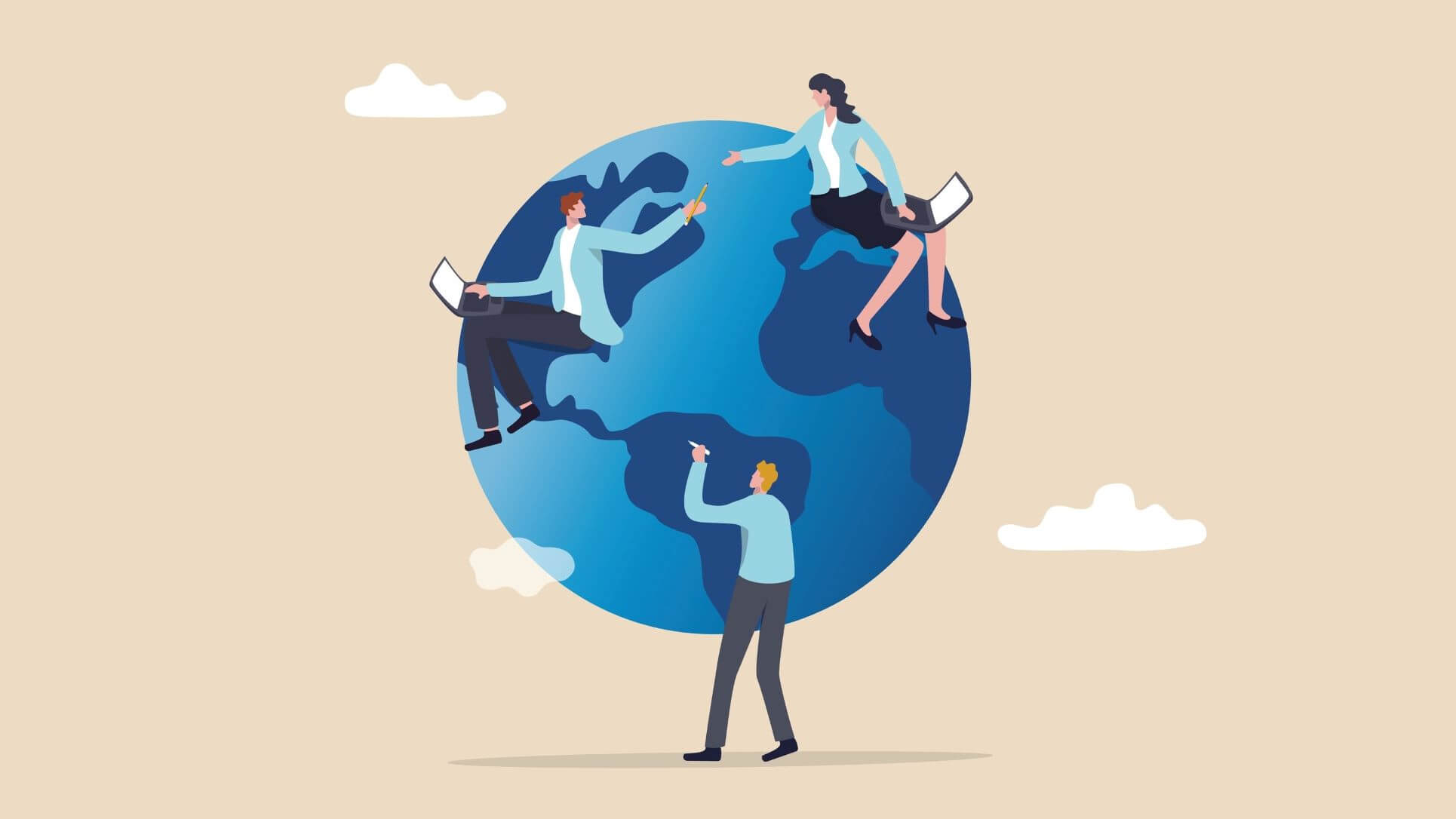Post-pandemic, what people want from work can't be summed up in the phrases 'remote' or 'in-office'.
How To Bolster And Optimise Employee And Customer Experience
Post-pandemic, what people want from work can't be summed up in the phrases 'remote' or 'in-office'.

In 2022, bolstering customer and employee experiences should be a priority for every business.
To understand why, we need to examine the transformations work has gone through over the past two years. In March 2020, we saw a mass move to new ways of working that finally banished the myth that remote work meant low productivity or poor collaboration. Instead, armed with the right technology, for knowledge workers, new possibilities were opened up.
In the months since, there’s been an ongoing question over what comes next. In 2021, hybrid work was the topic on every leader's lips as it became clear no mass return to the physical office was coming.
For knowledge workers, freedom over where you work will be one of the small silver linings to come from this period of upheaval. And it shouldn’t be taken lightly. The ability to work remotely is great for inclusivity, work-life balance, and access to talent. Put another way, it’s fantastic for individuals and whole organisations.
But it’s time to move the conversation on. With hybrid and digital becoming the default, we can spend less energy thinking about where we work, and more on how we work.
It’s time to start thinking about not just tools that keep us connected to each other, but how they impact the bigger picture: employee experience, and by extension, customer experience.
Focusing on experience as a driver of success in 2022 will be the key to creating more satisfying and effective businesses. And, technology, alongside the decision makers implementing it, plays a key role.
Where to start with employee experience for your tech team
What does employee experience mean in practice? According to Jacob Morgan, an expert in workplace trends, a great employee experience means creating an environment that people want to work in, not simply show up to. And as Morgan highlights, technology is key to this.
In the age of the digital office, technology is not just an enabler of hybrid work, it nurtures culture and experience. Channel-based messaging, for example, can be used to drive day-day work, while also providing a space for teams to cultivate non-work interests.
Meanwhile, specialist integrations and apps can do everything from matching colleagues for spontaneous conversation to automating work processes. Alongside modern staples like video conferencing, this enables smarter, more satisfying ways of working.
At Starling Bank, the team saw the potential for technology to improve experiences, and ran with it. They built their own multi-function app, called Starbot, to help them automate DevOps processes.
The bot enables pre-approved tech users to request escalated privileges for an allotted time, meaning that users can get the right access when needed to diagnose an issue or deploy a release. Beyond managing these escalations quickly and efficiently, Startbot can even restart servers when needed.
Starbot saves the team several hours a day and reduces the need for manual escalation of permissions. In short, it gives those busy tech teams time back to focus on the work that really matters.
Starbot is just one inspirational example, but today no business can afford not to explore the potential technology has to transform experiences at work for the better.
How great employee experiences become great customer experiences
Let’s think about work as a river. At one end you have the source—in this case your business that’s generating a product or a service. As the river flows out from the source, all kinds of different towns and villages depend on it. These are your customers, and they’re relying on you to keep things flowing.
If you’ve got a tonne of internal barriers to work at the top, near the source, the river is going to become clogged up and run dry by the time it reaches the customers. Creating a great employee experience is about removing those barriers to work so that everyone is engaged and has the tools they need to do a great job. So that the great experience flows uninhibited to the customers.
Tech teams are the barrier-removing experts. For example, they can help break down the silos between customer teams, enabling them to work as a cohesive whole (a fundamental for great employee and customer experience).
They do this by streamlining the tech suite. And the obvious place to start is with email, the unsecure source of untold miscommunication, untransparent decision making (and frustrated customers) which needs to be relegated to the past.
In email’s place, modern collaboration tools can provide transparency and ease of access to information. They can securely connect across teams, integrate with apps and even enable connections across company boundaries to help salespeople, for example, to collaborate directly with prospects.
Going further, expect tech teams in 2022 to take full advantage of the customizability of collaboration apps, developing their own custom bots, automated workflows or integrations.
With fewer office visits on the cards, this nimble and responsive way of working is essential.
Empowering creative problem solving is about prioritising the work tech experts were hired for. With the time to focus on this work, their experience and the end customer’s is improved.
Embracing the experience economy
What most of us want from work can’t be reduced to ‘remote’ or ‘in-office’. What we want is a great experience. We want workplaces that drive us to do brilliant, engaging work which delights customers, partners and colleagues alike.
In the year ahead, replacing legacy technology that inhibits those experiences, and giving tech teams the freedom to accelerate digital transformation is vital. In this new experience economy, creating value means empowering everyone with the freedom to focus on the work they love.
Chris Mills, Head of Customer Success EMEA at Slack.
Thanks for signing up to Minutehack alerts.
Brilliant editorials heading your way soon.
Okay, Thanks!

